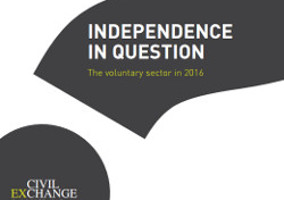There’s a famous saying, ‘It takes a village to raise a child’ and of course strong communities do a lot more, besides. When it comes to prevention – helping people lead happy lives as well as giving support when needed – the places we live in, or what I call social infrastructure, have a vital role.
This may seem obvious. We all know what we value in the places we live, or the places we grew up in. Estate agents point to good housing and schools, access to good healthcare and safe and crimefree communities. When we are making decisions about whether to live in a place, we look not just for employment opportunities but also for those green and recreational spaces, those places to meet, to shop and have fun and learn, and warm to a built environment that makes you feel comfortable, safe and relaxed.
These are all part of social infrastructure, of course, but it also includes less tangible things – the feeling that you can trust your neighbours, that people look after each other and cherish their shared environment. An ability to influence the things that matter, to have a real say, and not have change imposed. Ideal places like these are rich in associative activity and community, voluntary and faith organisations and groups, as well as having a prosperous private sector and wellrun and responsive public services. All of these organisations will be working together to build a good place.
‘As policy-makers and practitioners we have a blind spot’
As people, we know good social infrastructure when we see it but, as policy-makers and practitioners, I think we have a blind spot. We only really talk about it indirectly: ‘communities left behind’ or ‘deprived communities’, phrases which the people who live in these places often hate because it makes them feel trashed. Or policy makers and practitioners only see a part of social infrastructure, public services in particular, neglecting the fact that buildings, the environment and strong communities are essential too.
Places rich in social infrastructure are naturally preventative, helping to create well-being, generating resourcefulness and resilience and providing social networks that provide support when things get tough.
Unfortunately, places poor in social infrastructure can end up on a downward spiral – people and businesses want to move out, homes and shops become vacant, unemployment, crime and vandalism rises. People start to trust each other less, and feel people will not pull together to make them better. Social and health problems increase. Services become more focused on tackling crises, rather than helping to build the individual and social resourcefulness that helps avoid problems in the first place or which provides the social networks, facilities and services that can help nip any problems that do arise in the bud.
Many people still benefit from an earlier, golden age of investment in social infrastructure. Many schools, hospitals, sewers, libraries, public parks and sports facilities originate from that period and were effectively common goods, held in public ownership for the benefit of the public. The welfare state, which was also designed to reduce poverty and illness, provided another, national expression of the belief that collective investment in mutual health and wellbeing is to everyone’s benefit.
‘A loss of assets’
But this is being eroded. Over the last decade, there has been a quiet reduction in social infrastructure assets either from closure, sales or poor maintenance – playing fields and play areas, children centres and youth services, libraries and arts facilities have all been affected to name but a few. As well as a loss of assets, our collective sense of the value of commonly owned social infrastructure has reduced and public support for the welfare state has declined.
We talk about poverty and income inequalities but some places are very much richer in social infrastructure than others and this also makes a real difference to personal health and well-being, equality and opportunity.
The answer?
First, we need to value and protect existing social infrastructure. Greater investment is needed, particularly in those communities that have the poorest social infrastructure; and a good starting point is to map what assets exist.
'Recognising the rich resources that may already exist’
Second, it’s not just about money, it’s also about recognising the rich resources that may already exist, many of which may be non-financial, and also giving communities a real say over what happens in their community and about where any new investment goes.
Thirdly, it’s important to think holistically. Attending to one element without thinking of the others can be counterproductive. For example, strong communities are harder to create without physical places to meet. Good health benefits from recreational facilities and ready access to good food.
Finally, social infrastructure is strengthened by working collaboratively and right across sectors.
People who believe in prevention need to attend not just to the child (and the adult the child later becomes) but also to ‘the villages’ in which we all live.
Caroline Slocock is the director of Civil Exchange and the co-convenor of a Better Way.
This essay is one of a series being published by A Better Way in Insights for a Better Way: Improving Services and Building Communities which was published by Civil Exchange, in partnership with the Carnegie UK Trust. The book will be published on 4 July.
Related articles












